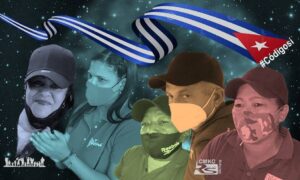
By: Santiago Romero, MSc.
“The Seven Stars” illuminated my childhood in September, as these ‘cabrillas’ fueled my desire to explore what lies beyond the reach of the common eye. The enigmatic sky has always been my passion and continues to be, particularly with the influence of the Virgos and the Delta Aquarids, which occur between August 25 and September 8.
The much-anticipated meteor showers, specifically the Perseids occurring from September 5th to 17th, and the magnificent Delta Aurigids from September 18th to October 10th, are noteworthy events. However, during this time, the weather tends to be more turbulent here on Earth, characterized by increased rainfall, lightning, strong winds, and hurricanes in the Caribbean-Atlantic region.
Those «cabrillas» betrayed me, not only because I later learned that they were the stunning Pleiades, in Ancient Greek times the seven beautiful sisters, but also because I discovered, while reading a large illustrated book on the history of mathematics, that I still keep, that they were the most spectacular feature in the winter sky.
Since there was no internet at that time, the kids of the old neighborhood in Veguita de Galo would rest on the porch of my grandmother, Godoberta Hierrezuelo, who was a cousin of Compay Segundo. We would enjoy the beauty of the dark, starry sky, becoming absorbed in its splendor throughout the night and into the early morning. One night, Professor Roberto, the brother of the legendary Rafael Mock Castro–founder and leader of the Contingent Heroes of Moncada—taught us about the constellations: Aries, Pisces, Cassiopeia, Cepheus, Lacerta, Pegasus, Ursa Minor, Draco, Cygnus, Lyra, Vulpecula, Sagitta, and Hercules. We marveled at their brilliance, floating in September, millions of light-years from Earth.
The primary focus was on the appearance of The Pleiades, visible from a kind of cosmic vantage point approximately four hundred light-years from Earth. The disappointing reality is that they were neither princesses nor goddesses, nor are they a single or seven stars. Instead, they comprise around three thousand stars, which do not form a constellation. However, to the average human eye, they appear as “seven goats” or as a neighbor said: “seven sisters” very beautiful sight that has captivated humanity for a long time.
The Pleiades are the daughters of the Titan Atlas and the sea nymph Pleione. They served Artemis, the goddess of heights and hunting, they had to remain virgins, embodying youth and show off their beauty in order to be eligible for marriage to gods. However, one of the seven disobeyed this rule and chose a mortal as her partner, resulting in one less star shining brightly in the sky.
How did The Pleiades get so far?
Orion was a hunter, and one morning, upon seeing the seven beautiful sisters, he pursued them for five years. Eventually, the sisters complained to Zeus, who decided to transform them into doves. They flew high into the sky until one day they disappeared. However, they did not vanish completely; instead, they were reborn in the distant firmament as stars known as the “seven cabrillas”, the majestic stars of September hold significant interpretations in American culture, yet each possesses its own unique identity: Alcyone, Asterope, Celaeno, Electra, Maia, Merope, and Taygete.
Today, all of them remain incredibly beautiful great-great-grandmothers, captivating—perhaps as part of the mysterious gift bestowed by Zeus, which was never revealed to mortify old Orion, a possible simulator of his death. In vain, he could be lurking in his constellation before the supposed fall of the Seven Beautiful Ones into the oceans, responding to a hidden request from their father, Poseidon, the God of the Seas. This was done to keep his slender nymphs hidden for forty nights and forty days, known as The Pleiades.

































































